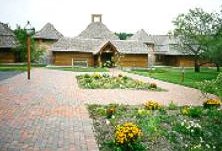Nesvizh

- Shtetl in Russia/Poland
- My parents emigrated from Nesvizh to U.S.
Between World War I and II, Nesvizh was a small Polish village with a population of approximately 15,000. There were about 10,000 Poles and Russians and over 5,000 Jews living side-by-side on a scant dozen streets or so that seemed more like a neighborhood of two-thirds of a mile. Such a small Eastern European Jewish community was called a shtetl. Nesvizh was just one of hundreds of shtetls in Eastern Poland, Western Belorussia and Ukraine which made up the “Pale of Settlement” dating back to the 17th century.
The Jews of the shtetl developed their own separate culture of literature, newspapers, magazines, music and dance. Yiddish was the medium of communication. The spiritual center of the community was the synagogue, and the way of life for many Jews was to follow the teachings of the Hebrew Scriptures. They mixed with the local population at the market place where Jews learned haphazard Polish and played music at Polish weddings. The peasant Poles acquired some Yiddish and Jewish lore. Polish aristocrats called upon Jews for their skills.
My parents and their respective families grew up in Nesvizh when it was under Russian control. My father fled the country in 1921, when Nesvizh reverted to Poland, because he feared retribution against Russian officials like himself since he was a commissar. He reached Brooklyn in 1926. Mother emigrated from Nesvizh to Chicago in 1910.


